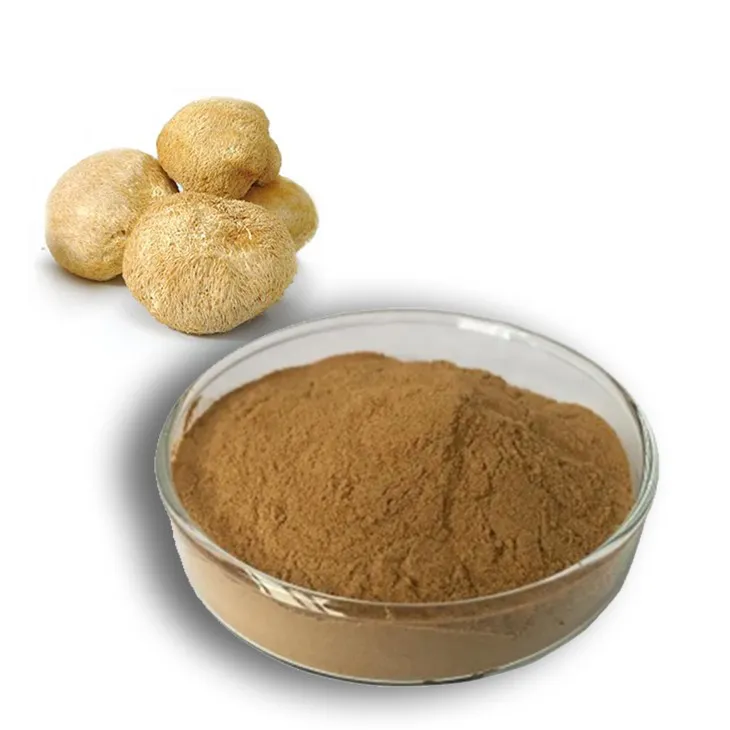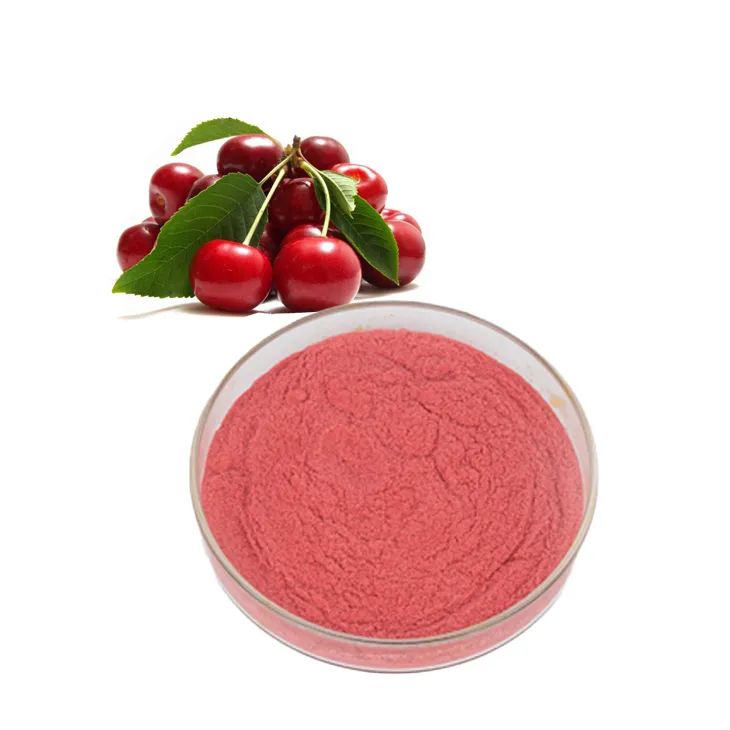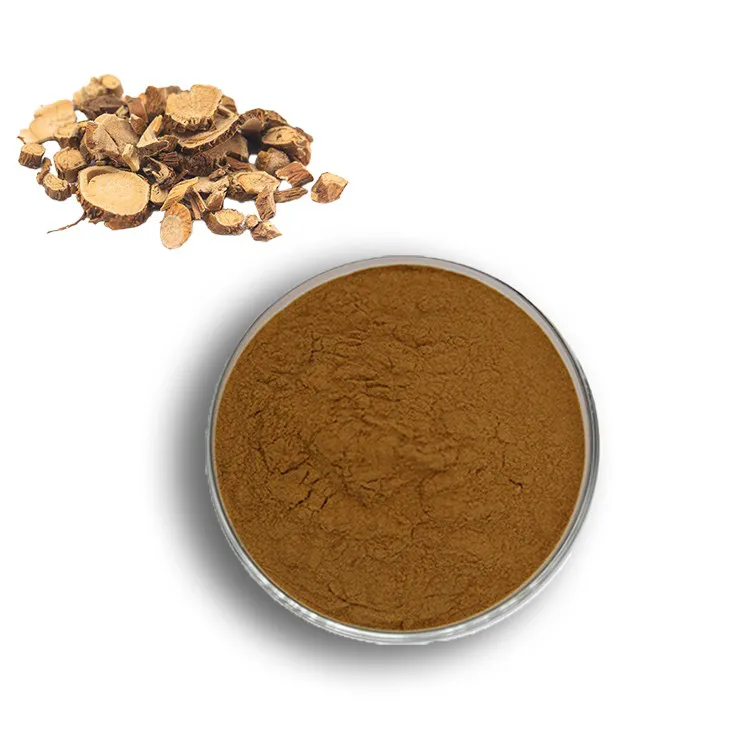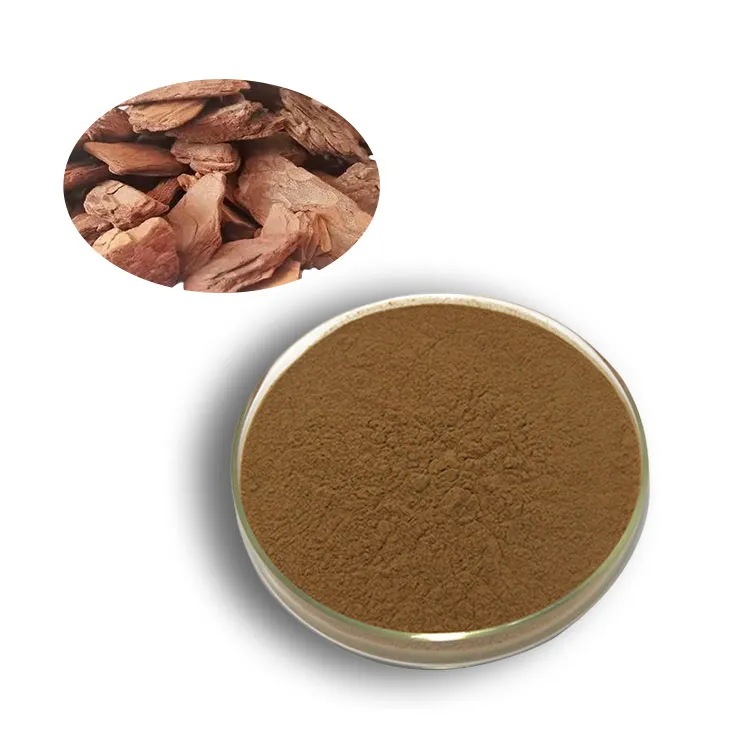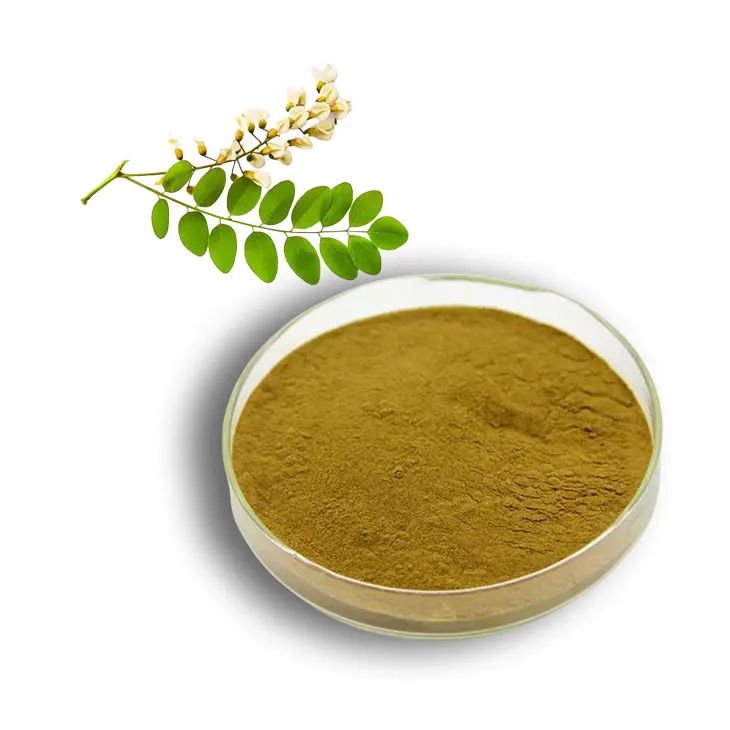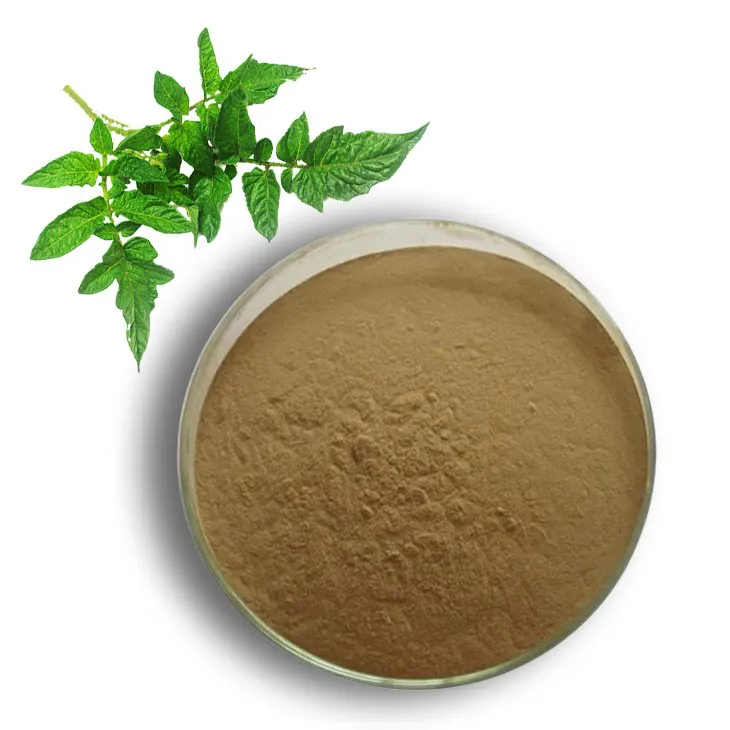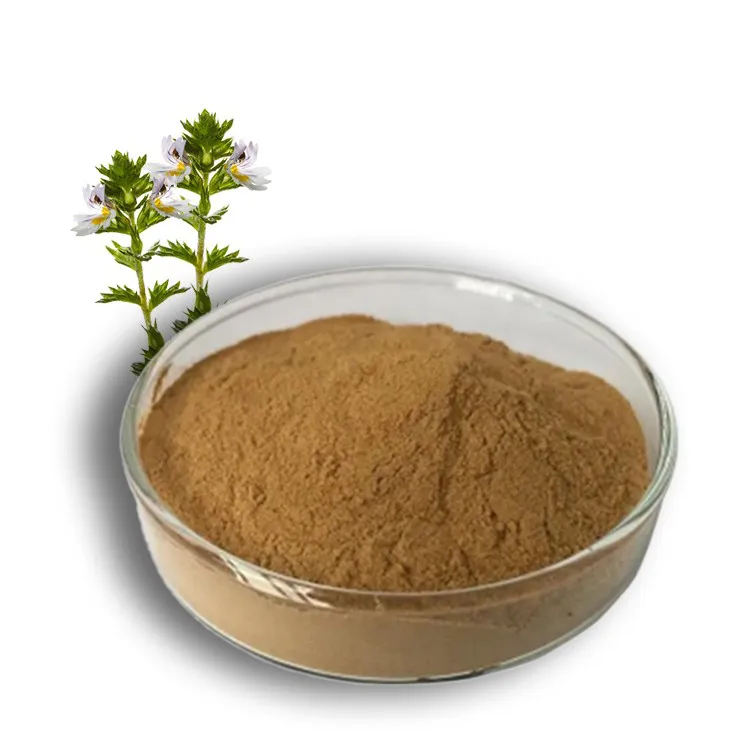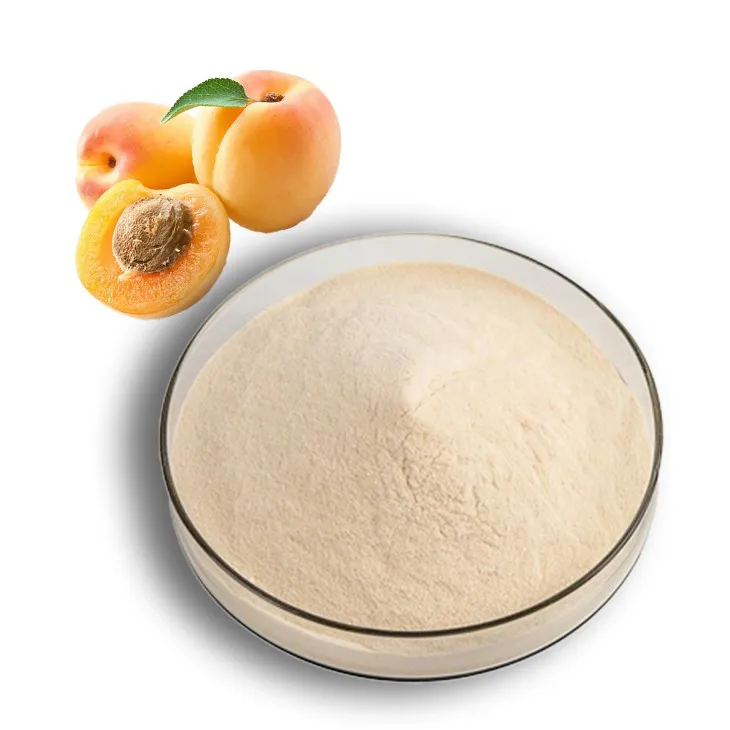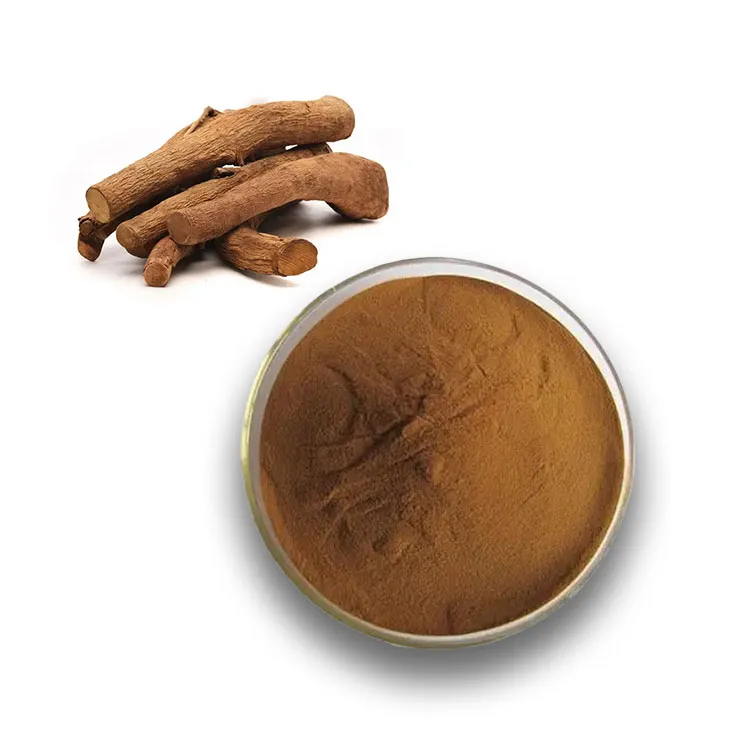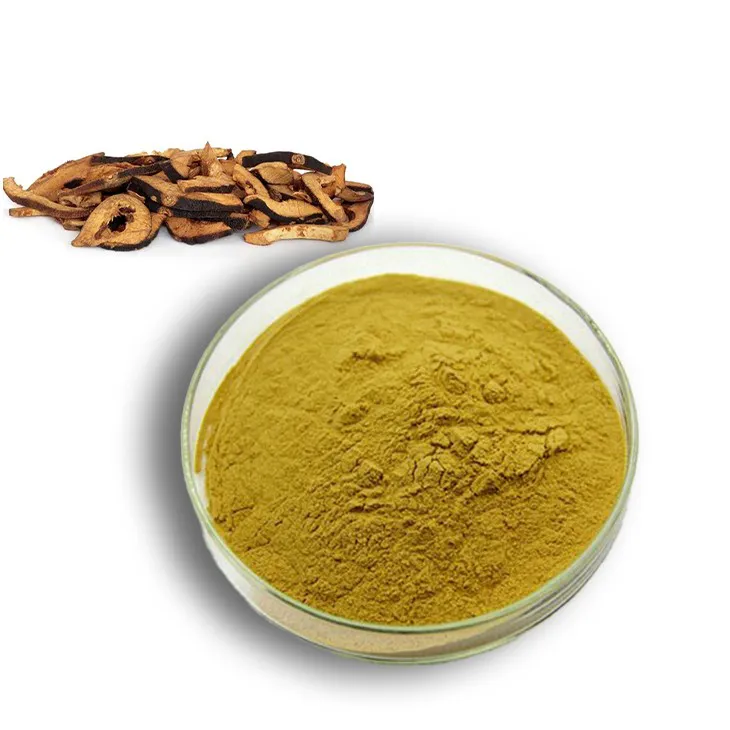- 0086-571-85302990
- sales@greenskybio.com
plant extract manufacturers
2023-09-24
1. Types of Plant Extracts
1. Types of Plant Extracts
Plant extracts are derived from various parts of plants, including leaves, roots, stems, flowers, and fruits. They are used for a wide range of applications, from food and beverages to cosmetics, pharmaceuticals, and supplements. Here are some common types of plant extracts:
1. Green Tea Extract: Rich in antioxidants, particularly EGCG (epigallocatechin gallate), green tea extract is widely used in skincare products for its anti-aging and anti-inflammatory properties.
2. Ginseng Extract: Known for its adaptogenic properties, ginseng extract is used in both traditional medicine and modern supplements to enhance physical and mental performance.
3. Ginkgo Biloba Extract: This extract is known for its ability to improve cognitive function and memory. It is commonly used in nootropic supplements.
4. Grape Seed Extract: Packed with proanthocyanidins, grape seed extract is used for its antioxidant and anti-inflammatory benefits.
5. Turmeric Extract: The active ingredient, Curcumin, is known for its anti-inflammatory and anti-oxidant properties. It is widely used in both traditional medicine and modern supplements.
6. Echinacea Extract: Often used to boost the immune system, echinacea extract is popular during cold and flu seasons.
7. St. John's Wort Extract: This extract is commonly used for its mood-enhancing properties and is often used as a natural treatment for mild to moderate depression.
8. Pomegranate Extract: Rich in antioxidants, pomegranate extract is used for its potential to improve heart health and support overall well-being.
9. Marigold Extract: Known for its calming effects, Marigold Extract is used in skincare products for its soothing and anti-inflammatory properties.
10. Saw Palmetto Extract: Often used to support prostate health, saw palmetto extract is a common ingredient in men's health supplements.
11. Valerian Root Extract: Known for its calming and sleep-promoting properties, valerian root extract is used in natural sleep aids.
12. Yohimbe Extract: Used for its potential to enhance sexual performance and support weight loss, yohimbe extract is a popular ingredient in male enhancement products.
13. Cranberry Extract: Known for its urinary tract health benefits, cranberry extract is used to prevent and treat urinary tract infections.
14. Passionflower Extract: Used for its calming effects and potential to improve sleep quality, passionflower extract is a natural alternative to prescription sleep aids.
15. Bilberry Extract: Similar to ginkgo biloba, Bilberry Extract is used for its potential to improve vision and cognitive function.
These extracts can be produced through various methods, including cold pressing, solvent extraction, and supercritical fluid extraction, each yielding different concentrations and compositions of active compounds. The choice of extraction method depends on the specific plant material and the desired end product.
2. Benefits of Plant Extracts
2. Benefits of Plant Extracts
Plant extracts are derived from various parts of plants, including leaves, roots, bark, seeds, and flowers, and they offer a wide range of benefits across different industries. Here are some of the key advantages of using plant extracts:
1. Natural Alternatives: Plant extracts provide natural alternatives to synthetic chemicals, which can be harmful to human health and the environment.
2. Health Benefits: Many plant extracts have medicinal properties that can help in the treatment of various diseases and conditions. They are rich in antioxidants, vitamins, and minerals that contribute to overall health and well-being.
3. Cosmetic and Skincare Applications: Plant extracts are widely used in the cosmetic and skincare industry due to their ability to nourish and protect the skin, reduce inflammation, and improve skin elasticity.
4. Flavor and Fragrance Industry: They are used to add natural flavors and fragrances to food products, beverages, and perfumes, enhancing the sensory experience for consumers.
5. Agricultural Use: Plant extracts can be used as natural pesticides or growth promoters in agriculture, reducing the need for harmful chemical pesticides.
6. Pharmaceutical Applications: Some plant extracts are used as active ingredients in pharmaceutical drugs, offering treatments for a variety of health conditions.
7. Nutritional Supplements: They are often used in the formulation of dietary supplements to provide additional nutrients and support for specific health needs.
8. Antimicrobial Properties: Certain plant extracts have antimicrobial properties that can help fight against bacteria, fungi, and viruses.
9. Sustainability: Using plant extracts supports sustainable practices by utilizing renewable resources and reducing the environmental impact of synthetic alternatives.
10. Regulatory Compliance: Plant extracts are often preferred by consumers and manufacturers alike due to their compliance with natural and organic standards, which can be a significant selling point in the market.
11. Versatility: Plant extracts can be used in various forms, such as powders, oils, and liquid extracts, making them versatile for different applications.
12. Enhanced Product Appeal: Products containing plant extracts can appeal to consumers who are health-conscious and prefer natural ingredients over synthetic ones.
13. Research and Development: The ongoing research into the properties of plant extracts opens up new possibilities for their use in various industries, leading to innovative products and applications.
14. Cultural and Traditional Uses: Many plant extracts have been used in traditional medicine and cultural practices, offering a connection to historical and cultural heritage.
15. Economic Benefits: The plant extract industry can contribute to the local economy by creating jobs and supporting agricultural communities.
The benefits of plant extracts are numerous and varied, making them an essential component in many industries and a valuable resource for consumers seeking natural and sustainable products.
3. Manufacturing Process
3. Manufacturing Process
The manufacturing process of plant extracts is a complex and multi-step procedure that involves careful handling and processing of plant materials to ensure the preservation of their bioactive compounds. Here is a detailed overview of the typical steps involved in the production of plant extracts:
1. Selection of Plant Material: The process begins with the selection of high-quality plant materials. The choice of plant species is crucial as it determines the type of extract and its potential applications.
2. Harvesting: Plants are harvested at the optimal time to ensure the highest concentration of bioactive compounds. This often involves selecting plants at the peak of their growth or during specific seasons.
3. Cleaning: The harvested plant material is thoroughly cleaned to remove any dirt, debris, or contaminants that may affect the quality of the final product.
4. Drying: The cleaned plant material is dried to reduce moisture content. This is an essential step to prevent microbial growth and to prepare the material for further processing.
5. Grinding: The dried plant material is ground into a fine powder. This increases the surface area and facilitates the extraction of bioactive compounds.
6. Extraction Method: The powdered plant material undergoes an extraction process to isolate the desired compounds. Common extraction methods include:
- Solvent Extraction: Using solvents like water, ethanol, or methanol to dissolve the bioactive compounds.
- Supercritical Fluid Extraction: Utilizing supercritical fluids, typically carbon dioxide, to extract compounds at high pressures and temperatures.
- Cold Pressing: Applying pressure to plant material at low temperatures to extract oils without using solvents.
- Steam Distillation: Using steam to carry volatile compounds from the plant material into a condenser, where they are collected as an oil.
7. Concentration: After extraction, the liquid extract is often concentrated to increase the concentration of the bioactive compounds. This can be done through evaporation, filtration, or other concentration techniques.
8. Purification: The concentrated extract may undergo further purification steps to remove any unwanted compounds or residues, ensuring a high-purity product.
9. Standardization: To ensure consistency and quality, the extract is standardized to contain a specific amount of the bioactive compound(s). This is often done through analytical methods such as high-performance liquid chromatography (HPLC).
10. Quality Control: Each batch of plant extract is tested for quality, purity, and safety according to established standards and regulations.
11. Packaging: The final product is packaged in airtight containers to protect it from light, moisture, and oxidation, which can degrade the bioactive compounds.
12. Storage and Distribution: Proper storage conditions are maintained during distribution to preserve the integrity and potency of the plant extracts.
Throughout the manufacturing process, strict adherence to Good Manufacturing Practices (GMP) is essential to ensure the safety, efficacy, and quality of plant extracts. Advances in technology and innovation continue to improve the efficiency and sustainability of plant extract production, meeting the growing demand for natural and organic products in various industries.
4. Quality Control Measures
4. Quality Control Measures
Ensuring the quality and safety of plant extracts is paramount for manufacturers. This is achieved through a series of rigorous quality control measures that are implemented at every stage of the manufacturing process. Here are some of the key quality control measures that plant extract manufacturers typically follow:
4.1. Sourcing High-Quality Raw Materials
The quality of the final product is heavily dependent on the quality of the raw materials used. Manufacturers often work closely with trusted suppliers to ensure that the plants used are free from contaminants and are of the highest quality.
4.2. Standardization of Extracts
Standardization is the process of ensuring that each batch of plant extract contains a consistent amount of active ingredients. This is achieved through various analytical techniques such as high-performance liquid chromatography (HPLC) and gas chromatography-mass spectrometry (GC-MS).
4.3. Good Manufacturing Practices (GMP)
Adhering to Good Manufacturing Practices (GMP) is essential for maintaining the quality and safety of plant extracts. GMP guidelines cover various aspects of manufacturing, including facility design, equipment maintenance, personnel training, and documentation.
4.4. Testing for Contaminants
Plant extracts can be contaminated with various substances, such as heavy metals, pesticides, and microbial pathogens. Manufacturers conduct regular testing to ensure that their products are free from these contaminants.
4.5. Stability Testing
Stability testing is performed to determine the shelf life of plant extracts and to ensure that they maintain their potency and quality over time. This involves subjecting the extracts to various conditions, such as temperature fluctuations and exposure to light, and monitoring their stability.
4.6. Traceability
Traceability is the ability to track the movement of raw materials and finished products throughout the supply chain. This helps manufacturers to identify and address any issues that may arise, such as contamination or quality inconsistencies.
4.7. Certification and Accreditation
Many plant extract manufacturers seek certification and accreditation from recognized organizations, such as the United States Pharmacopeia (USP) or the International Organization for Standardization (ISO). These certifications demonstrate a manufacturer's commitment to quality and adherence to industry standards.
4.8. Continuous Improvement
Plant extract manufacturers are constantly looking for ways to improve their quality control measures. This may involve investing in new technologies, implementing new testing methods, or adopting new industry standards.
By implementing these quality control measures, plant extract manufacturers can ensure that their products are safe, effective, and of the highest quality. This not only helps to protect consumers but also helps to build trust and credibility in the industry.
5. Environmental Impact and Sustainability
5. Environmental Impact and Sustainability
Plant extract manufacturers play a crucial role in the eco-friendly and sustainable production of natural products. The environmental impact and sustainability of the industry are of paramount importance, as they directly influence the health of our planet and its inhabitants. Here is a detailed look at the various aspects of environmental impact and sustainability in the plant extract manufacturing industry:
1. Source of Raw Materials:
- Sustainable sourcing of plant materials is essential to minimize the environmental impact. Manufacturers often work with local farmers and communities to ensure that the plants are grown without causing deforestation or habitat destruction.
2. Organic and Regenerative Agriculture:
- Many plant extract manufacturers promote organic farming practices that avoid the use of synthetic fertilizers and pesticides. This not only reduces the environmental impact but also ensures the purity and quality of the extracts.
3. Water and Energy Conservation:
- During the manufacturing process, efforts are made to conserve water and energy. This includes using energy-efficient equipment, recycling water, and employing renewable energy sources where possible.
4. Waste Management:
- The industry is committed to responsible waste management practices. Byproducts and waste materials from the extraction process are often recycled or composted, reducing the amount of waste that ends up in landfills.
5. Green Chemistry:
- Plant extract manufacturers are increasingly adopting green chemistry principles, which focus on designing products and processes that minimize the use and generation of hazardous substances.
6. Carbon Footprint Reduction:
- Efforts are made to reduce the carbon footprint of the industry by optimizing transportation, using eco-friendly packaging, and investing in carbon offset programs.
7. Biodiversity Conservation:
- By promoting the use of diverse plant species, manufacturers contribute to the conservation of biodiversity. This not only ensures the sustainability of the industry but also supports the resilience of ecosystems.
8. Ethical Sourcing and Fair Trade:
- Many manufacturers ensure that their supply chains are ethical and support fair trade practices. This helps to empower local communities and promotes social sustainability.
9. Certifications and Standards:
- Adherence to certifications such as Fair Trade, Organic, and Rainforest Alliance helps to guarantee that the environmental and social standards are met throughout the supply chain.
10. Consumer Awareness and Education:
- Plant extract manufacturers often engage in consumer education to raise awareness about the importance of sustainable practices and the benefits of natural products.
11. Research and Development:
- Continuous research and development are crucial for finding new ways to improve the sustainability of the manufacturing process and to discover more eco-friendly alternatives.
12. Government Regulations and Industry Standards:
- Compliance with government regulations and industry standards helps to ensure that the environmental impact of the plant extract manufacturing process is minimized.
In conclusion, the environmental impact and sustainability of the plant extract manufacturing industry are multifaceted. By adopting eco-friendly practices, promoting sustainable sourcing, and investing in green technologies, manufacturers can contribute to a healthier planet while meeting the growing demand for natural products.
6. Market Trends and Demand
6. Market Trends and Demand
The market for plant extracts has been witnessing significant growth and is expected to continue this trend in the coming years. Several factors are driving this demand, including the increasing awareness of natural products, the rise in health consciousness, and the growing demand for organic and eco-friendly products.
Health and Wellness Trends:
The health and wellness industry has seen a surge in the use of plant extracts, as consumers are becoming more aware of the potential health benefits of natural ingredients. The demand for plant-based supplements, particularly those with antioxidant, anti-inflammatory, and immune-boosting properties, is on the rise.
Cosmetics and Personal Care:
In the cosmetics and personal care industry, plant extracts are increasingly being used as natural alternatives to synthetic ingredients. Consumers are seeking products that are free from harmful chemicals, leading to a higher demand for plant-based formulations.
Food and Beverage Industry:
Plant extracts are being incorporated into food and beverages for their flavor, color, and health benefits. The trend towards functional foods and beverages that offer additional health benefits beyond basic nutrition is boosting the demand for plant extracts.
Pharmaceutical Applications:
The pharmaceutical sector continues to explore the potential of plant extracts for the development of new drugs and treatments. The search for novel compounds with medicinal properties is driving research and development in this area.
Agricultural Use:
Plant extracts are also finding applications in agriculture as natural pesticides and growth promoters. There is a growing interest in organic farming practices, which is increasing the demand for plant-based solutions.
Market Segmentation:
The plant extract market can be segmented based on the type of extract (e.g., herbal, fruit, and vegetable extracts), application (pharmaceutical, food and beverage, cosmetics, etc.), and region. Each segment has its own growth drivers and trends.
Regional Demand:
Different regions have varying levels of demand for plant extracts based on cultural preferences, regulatory environments, and market maturity. For instance, Asia-Pacific is expected to be a significant market due to the traditional use of herbal medicine and the growing middle class.
Challenges in Meeting Demand:
While the demand for plant extracts is growing, manufacturers face challenges such as ensuring consistent quality, scaling up production to meet demand, and navigating complex regulatory landscapes.
Forecasts and Projections:
Analysts predict a robust growth rate for the plant extract market, with factors such as technological advancements in extraction methods, increased research into the benefits of plant extracts, and a continued shift towards natural products contributing to this growth.
Understanding these market trends and demands is crucial for plant extract manufacturers to stay competitive, innovate, and meet the evolving needs of consumers and industries alike.
7. Challenges and Opportunities
7. Challenges and Opportunities
The plant extract industry, while offering a wealth of opportunities, is not without its challenges. As the demand for natural products continues to rise, manufacturers must navigate a complex landscape of regulatory standards, market competition, and environmental concerns.
Challenges:
1. Regulatory Compliance: Manufacturers must adhere to strict regulations and guidelines from agencies such as the FDA and the European Medicines Agency. These regulations can be complex and vary by region, requiring constant updates and compliance.
2. Quality Consistency: Ensuring the consistency of plant extracts in terms of potency and purity can be challenging due to variations in raw materials, environmental conditions, and extraction methods.
3. Supply Chain Management: Sourcing high-quality raw materials can be difficult, especially for rare or seasonal plants. Supply chain disruptions can lead to delays and increased costs.
4. Technological Advancements: Keeping up with the latest extraction technologies and methods is crucial for maintaining a competitive edge. However, investing in new technology can be costly.
5. Market Competition: The market is highly competitive, with numerous players vying for market share. Differentiating products and maintaining a strong brand presence is essential.
6. Environmental Impact: The industry must balance the need for sustainable sourcing with the environmental impact of large-scale cultivation and extraction processes.
Opportunities:
1. Growing Demand for Natural Products: There is a significant and growing consumer preference for natural products, which is driving demand for plant extracts in various industries, including food and beverage, cosmetics, and pharmaceuticals.
2. Health and Wellness Trends: The rise of health-conscious consumers seeking natural remedies and supplements presents a significant opportunity for plant extract manufacturers to develop and market products that cater to these needs.
3. Innovation in Extraction Techniques: Advancements in extraction technologies, such as supercritical fluid extraction and ultrasound-assisted extraction, offer opportunities for higher yields, better quality, and more efficient processes.
4. Expansion into New Markets: There is potential for expansion into emerging markets and the development of new applications for plant extracts, such as in the nutraceutical and functional food sectors.
5. Partnerships and Collaborations: Forming strategic partnerships with research institutions, universities, and other industry players can lead to innovations and new product development.
6. Sustainability Initiatives: Embracing sustainable practices and transparent sourcing can enhance a company's reputation and appeal to consumers who are increasingly concerned about environmental and social responsibility.
7. Digital Marketing and E-commerce: Leveraging digital platforms for marketing and sales can help manufacturers reach a wider audience and tap into the growing online market for natural products.
By addressing these challenges and capitalizing on the opportunities, plant extract manufacturers can position themselves for success in a dynamic and evolving market. The key lies in innovation, adaptability, and a commitment to quality and sustainability.
8. Leading Plant Extract Manufacturers
8. Leading Plant Extract Manufacturers
The plant extract industry is a competitive market with numerous manufacturers worldwide. Here are some of the leading plant extract manufacturers that have established a strong reputation for quality, innovation, and sustainability:
1. Naturex - A global leader in specialty plant extracts, Naturex is known for its wide range of natural ingredients used in the food, cosmetics, and pharmaceutical industries.
2. Kemin Industries - With a focus on health and nutrition, Kemin Industries offers a variety of plant extracts that cater to the needs of the food and beverage, feed, and health markets.
3. Frutarom - A leading player in the flavor and natural ingredients industry, Frutarom provides a comprehensive range of plant extracts for various applications.
4. Sabinsa Corporation - Specializing in herbal extracts, Sabinsa is renowned for its research and development in the field of Ayurveda and has a strong presence in the dietary supplement market.
5. Horphag Research - Best known for its Pycnogenol® pine bark extract, Horphag Research has a strong commitment to scientific research and quality manufacturing.
6. Indena - Indena is a leading manufacturer of high-quality botanical extracts for the pharmaceutical, health food, and personal care industries.
7. Givaudan - While primarily a flavor and fragrance company, Givaudan also offers a range of plant extracts for the food and beverage industry.
8. BASF - A global chemical company, BASF also produces plant extracts for various applications, including pharmaceuticals, cosmetics, and agriculture.
9. Spectrum Ingredients - Specializing in botanical extracts, Spectrum Ingredients provides a wide range of natural solutions for the food, beverage, and supplement industries.
10. Greentech Nature - Greentech Nature is a prominent manufacturer of plant extracts, offering innovative solutions for the health and wellness sector.
These companies are at the forefront of the plant extract industry, constantly innovating and improving their manufacturing processes to meet the growing demand for natural and sustainable ingredients. Their commitment to quality, safety, and environmental responsibility sets the standard for the industry.
9. Future Outlook for the Industry
9. Future Outlook for the Industry
The plant extract industry is poised for significant growth and expansion in the coming years, driven by various factors such as increasing consumer awareness about natural products, technological advancements in extraction techniques, and the growing demand for organic and eco-friendly products. Here are some key aspects of the future outlook for the plant extract industry:
1. Consumer Demand: As consumers become more health-conscious and environmentally aware, the demand for plant-based products is expected to rise. This trend is likely to continue, leading to an increased demand for plant extracts in various applications such as food and beverages, cosmetics, pharmaceuticals, and dietary supplements.
2. Technological Advancements: Innovations in extraction technologies, such as supercritical fluid extraction, ultrasonic extraction, and membrane technology, are expected to improve the efficiency and purity of plant extracts. These advancements will enable manufacturers to produce higher quality extracts and cater to the specific needs of various industries.
3. Regulatory Support: Governments around the world are increasingly recognizing the benefits of natural products and are implementing regulations that support the use of plant extracts. This regulatory support will likely encourage further investment in the industry and promote the development of new products.
4. Sustainability: The industry is expected to focus more on sustainable practices, including the use of renewable resources, reducing waste, and minimizing the environmental impact of production processes. This will not only help in preserving the environment but also enhance the appeal of plant extracts to consumers who are concerned about sustainability.
5. Market Expansion: The plant extract market is expected to expand into new regions and countries, driven by the global demand for natural products. This expansion will open up new opportunities for manufacturers to tap into emerging markets and diversify their customer base.
6. Research and Development: Continued investment in research and development will lead to the discovery of new plant species with beneficial properties and the development of novel applications for existing extracts. This will help the industry to innovate and offer a wider range of products to consumers.
7. Collaborations and Partnerships: The industry is likely to see more collaborations and partnerships between plant extract manufacturers, research institutions, and other stakeholders. These partnerships will facilitate the sharing of knowledge, resources, and expertise, leading to the development of new products and technologies.
8. Challenges: Despite the positive outlook, the industry will also face challenges such as competition from synthetic products, regulatory hurdles, and the need for consistent quality and safety standards. Addressing these challenges will be crucial for the sustainable growth of the industry.
9. Investment Opportunities: The growing demand and potential for innovation in the plant extract industry present numerous investment opportunities for both new and established players. Investors will be attracted to companies that demonstrate a commitment to quality, sustainability, and innovation.
In conclusion, the future of the plant extract industry looks promising, with significant growth potential driven by consumer demand, technological advancements, and a focus on sustainability. However, the industry will need to navigate challenges and continuously innovate to maintain its competitive edge and meet the evolving needs of consumers and industries alike.
- ▶ Hesperidin
- ▶ citrus bioflavonoids
- ▶ plant extract
- ▶ lycopene
- ▶ Diosmin
- ▶ Grape seed extract
- ▶ Sea buckthorn Juice Powder
- ▶ Beetroot powder
- ▶ Hops Extract
- ▶ Artichoke Extract
- ▶ Reishi mushroom extract
- ▶ Astaxanthin
- ▶ Green Tea Extract
- ▶ Curcumin Extract
- ▶ Horse Chestnut Extract
- ▶ Other Problems
- ▶ Boswellia Serrata Extract
- ▶ Resveratrol Extract
- ▶ Marigold Extract
- ▶ Grape Leaf Extract
- ▶ blog3
- ▶ Aminolevulinic acid
- ▶ Cranberry Extract
- ▶ Red Yeast Rice
- ▶ Red Wine Extract
-
Hericium erinaceus extract powder
2023-09-24
-
Acerola Extract
2023-09-24
-
Sophora Flavescens Root Extract
2023-09-24
-
Pine bark Extract Powder
2023-09-24
-
Sophora Japonica Flower Extract
2023-09-24
-
Senna Leaf Extract
2023-09-24
-
Eyebright Extract
2023-09-24
-
Apricot Powder
2023-09-24
-
Tongkat Ali Extract
2023-09-24
-
Citrus Aurantii Extract
2023-09-24











